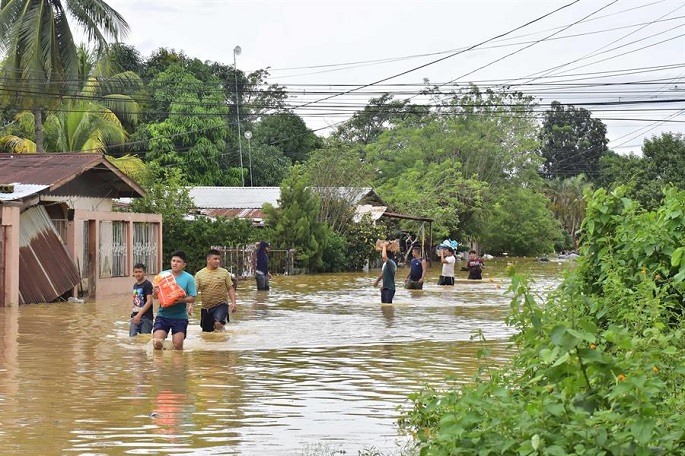Eta's drenching rains in Honduras evoke memory of Hurricane Mitch
Published : 05 Nov 2020, 23:47
Tropical Depression Eta is reminding Hondurans of the catastrophic flood damage caused 22 years ago by Hurricane Mitch, although on this occasion the loss of life and number of people left homeless are far lower.
Torrential rains produced by Eta in Honduras, which started falling even before it made landfall on Tuesday on neighboring Nicaragua's northeast coast as a Category 4 hurricane, have caused at least seven deaths, sparked flooding in much of the country and triggered mudslides and major damage to infrastructure and agricultural, livestock and industrial output.
In some parts of Honduras' Caribbean, northern, eastern and western regions, the damage is similar to that caused by Mitch, a 1998 Category 5 hurricane that was the worst natural disaster in that impoverished Central American nation's history.
That hurricane left more than 5,000 people dead, hundreds missing and around 1.5 million homeless and caused material damage that exceeded $4 billion.
No family or corner of Honduras was spared the wrath of Mitch, which left the country in a state of calamity and completely incommunicado.
The damage caused by Eta is of a lower magnitude, but material losses are comparable in areas hit by the heaviest rains.
According to preliminary reports from Honduras' Permanent Contingency Commission (Copeco), Eta has destroyed at least nine bridges and left 41 communities incommunicado.
Landslides also are preventing the use of several major roads, one of which occurred on Thursday and is temporarily blocking travel on a 234-kilometer (145-mile) route linking the countries' two largest urban centers: the northwestern city of San Pedro Sula and the south-central city of Tegucigalpa, the nation's capital.
Large-scale flooding also has forced residents of some urban and rural areas, including three municipalities in the Sula Valley, part of the northwestern Caribbean department of Cortes, to seek safety on the roofs of their homes.
Others who were forced to flee with their clothing, food and pets and make their way to higher ground are now are being housed at government-run shelters.
Mudslides also have cut off links between San Pedro Sula and the nearby city of Santa Barbara and also restricted road travel in different regions of the departments of Yoro, Atlantida, Colon and Olancho.
Rainfall has not been intense in Tegucigalpa, yet mudslides have still damaged dozens of homes in low-income neighborhoods.
According to the Miami-based National Hurricane Center's latest bulletin on Thursday, Eta is still producing heavy rains and life-threatening flooding over portions of Central America but should move over the northwestern Caribbean during the next six to 12 hours.
Honduras has historically been hit by powerful hurricanes roughly every 20 years, with Hurricane Fifi-Orlene devastating the country in 1974 (24 years before Mitch) and causing around 10,000 deaths.
Due to rapid deforestation over the past half century, the country now is more vulnerable to hurricanes and flooding than ever before.


